Women Inventors and Discoverers in History
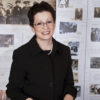

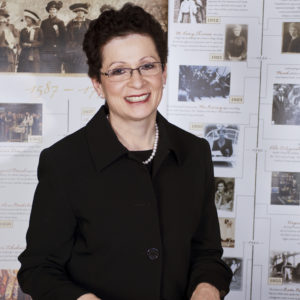
Jill S. Tietjen, PE, is an author, national speaker, and…
Google Arts & Culture is presenting exhibits on inventors and discoverers for online viewing. Five specific exhibits have been developed to present women inventors and discoverers: science, medicine, engineering, health and beauty, and household. Many of these women have patents from the U.S. Patent and Trademark Office. Did you know that it wasn’t until 1809 that a woman in the U.S. could get a patent in her own name? That first woman to do so was Mary Kies, whose patent (signed by President James Madison) was for a device for weaving straw with silk or thread to make hats. She was inducted into the National Inventors Hall of Fame in 2006. In this month’s column, we feature women inventors and discoverers whose contributions have enhanced our quality of life and standard of living.

Born into slavery in 1850, Sarah Goode moved with her family to Chicago after the end of the Civil War. Her father was a carpenter and she married a carpenter. While running a furniture store, she heard frustration expressed by her customers that their small apartments didn’t have enough room for furniture and there was a need for additional storage space. Necessity being the mother of invention, Goode invented a folding cabinet bed that could be made by her husband or father. She received her patent on July 14, 1885 for what today we would call a hide-away, a bed that when folded became a roll top desk. It even included a storage area for writing utensils and stationery supplies. Goode is generally referred to as the first African-American woman to receive a patent.

Physicist Katharine Blodgett was working at General Electric when she invented non-reflective glass. The first female scientist hired by GE, Blodgett filed for her patent in 1939 and received it in 1940. One of the first uses of the non-reflective glass was for the camera lenses that filmed the movie Gone with the Wind. The glass is used today in many applications including on our laptops, televisions, and smartphones. Blodgett received a total of eight patents over the course of her career. She also worked on improvements to the light bulb involving electric discharges of gases which laid the foundation for the field of plasma physics. Blodgett invented the color gauge to measure molecular coatings on glass to the millionth of an inch. Her work during World War II included poison gas adsorbents, methods of deicing airplane wings, and improved smokescreens. In 2007, Blodgett was inducted into the National Inventors Hall of Fame.

Biochemist Florence Seibert received her undergraduate degree from Goucher College and her Ph.D. from Yale University. She identified the impurities introduced into intravenous injections and developed a new spray-catching trap to prevent contamination during the distillation process. This process was subsequently adopted by the Food and Drug Administration, the National Institutes of Health and pharmaceutical firms. She is best known for her work in identifying a pure form of tuberculin, enabling the development and use of a reliable tuberculosis test which became the international standard for tuberculin tests in the 1940s. The recipient of many awards for her groundbreaking work, Seibert has been inducted into the National Women’s Hall of Fame.

Mathematician Admiral Grace Murray Hopper also received her Ph.D. from Yale University after completing her undergraduate work at Vassar and her master’s degree at Yale. A pioneer in the field of computer science, Hopper invented the computer compiler – the software that allows humans to speak in our languages to a computer – the compiler then translates our languages into the zeroes and ones that the computer processes. Hopper invented the first English-based computer language, FLOW-MATIC and was instrumental in the development of the business programming language, COBOL. She was famous for her “nanoseconds” – pieces of wire 11.86 inches long that demonstrated how far light traveled in a billionth of a second and thus how fast computers operate. Hopper loved to take credit for finding the first computer bug – it was a moth stuck in the relays of the computer at Harvard University, where she was working. She removed it from the relay and taped it into the logbook – you can view an image online today. The first individual woman to receive the National Medal of Technology (today called the National Medal of Technology and Innovation), Hopper has been inducted into the National Women’s Hall of Fame. Hopper received the Presidential Medal of Freedom posthumously in 2016. In 2017, Hopper College at Yale University was named in her honor.
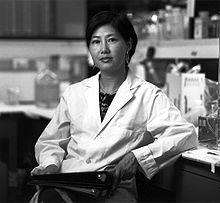
Virologist and molecular biologist, Flossie Wong-Staal was the first scientist to clone the human immunodeficiency virus (HIV), a major step in proving that HIV was the cause of acquired immunodeficiency syndrome (AIDS) and thus leading to effective treatments of the disease. After fleeing mainland China with her family and relocating to Hong Kong, Wong-Staal attended the University of California, Los Angeles (UCLA), earning her undergraduate and graduate degrees. Her postdoctoral work was conducted at the University of California, San Diego (UCSD). Wong-Staal then joined the National Cancer Institute (NCI). While at NCI, she and her team identified HIV as the cause of AIDS and completed the genetic mapping of the virus. She later returned UCSD, and continued her work on retroviruses. Elected to the Institute of Medicine of the U.S. National Academies, Wong-Staal has retired from UCSD and serves as Chief Scientific Officer for iTherX, formerly Immusol, a biopharmaceutical company she co-founded while at UCSD which is working on improved drugs for the treatment of hepatitis C.
Women contribute to our lives in so many ways including as inventors and discoverers. The women profiled above and many other women, almost all of them women we have not heard about and not learned about in school across all fields of endeavor, are profiled in our book, Her Story: A Timeline of the Women Who Changed America. Help us by continuing to tell women’s stories and write women back into history!
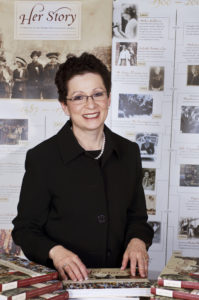 Jill S. Tietjen, PE, is an author, national speaker, and an electrical engineer. After 40 years in the electric utility industry, her professional focus is now on women’s advocacy, worldwide. She blogs for The Huffington Post, speaks nationally on the accomplishments of women, nominates women for awards, and continues to write books (8 published to date), following in the footsteps of her bestselling and award-winning book, Her Story: A Timeline of the Women Who Changed America (written with Charlotte Waisman). She is a frequent keynote speaker as her positive energy and her ability to relate to the audience result in inspired and energized listeners. The recipient of many awards, her induction into the Colorado Women’s Hall of Fame in 2010 remains one of her most treasured.
Jill S. Tietjen, PE, is an author, national speaker, and an electrical engineer. After 40 years in the electric utility industry, her professional focus is now on women’s advocacy, worldwide. She blogs for The Huffington Post, speaks nationally on the accomplishments of women, nominates women for awards, and continues to write books (8 published to date), following in the footsteps of her bestselling and award-winning book, Her Story: A Timeline of the Women Who Changed America (written with Charlotte Waisman). She is a frequent keynote speaker as her positive energy and her ability to relate to the audience result in inspired and energized listeners. The recipient of many awards, her induction into the Colorado Women’s Hall of Fame in 2010 remains one of her most treasured.
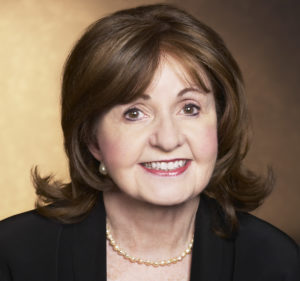 Charlotte S. Waisman, Ph.D. is a national champion and advocate for women as a professor and keynote speaker. A corporate leader, executive coach, and facilitator, she conducts leadership workshops nationally.
Charlotte S. Waisman, Ph.D. is a national champion and advocate for women as a professor and keynote speaker. A corporate leader, executive coach, and facilitator, she conducts leadership workshops nationally.
Author: Jill Tietjen
Jill S. Tietjen, PE, is an author, national speaker, and an electrical engineer. After 40 years in the electric utility industry, her professional focus is now on women’s advocacy, worldwide. She blogs for The Huffington Post, speaks nationally on the accomplishments of women, nominates women for awards, and continues to write books (8 published to date), following in the footsteps of her bestselling and award-winning book, Her Story: A Timeline of the Women Who Changed America (written with Charlotte Waisman). She is a frequent keynote speaker as her positive energy and her ability to relate to the audience result in inspired and energized listeners. The recipient of many awards, her induction into the Colorado Women’s Hall of Fame in 2010 remains one of her most treasured.

Jill S. Tietjen, PE, is an author, national speaker, and an electrical engineer. After 40 years in the electric utility industry, her professional focus is now on women’s advocacy, worldwide. She blogs for The Huffington Post, speaks nationally on the accomplishments of women, nominates women for awards, and continues to write books (8 published to date), following in the footsteps of her bestselling and award-winning book, Her Story: A Timeline of the Women Who Changed America (written with Charlotte Waisman). She is a frequent keynote speaker as her positive energy and her ability to relate to the audience result in inspired and energized listeners. The recipient of many awards, her induction into the Colorado Women’s Hall of Fame in 2010 remains one of her most treasured.


